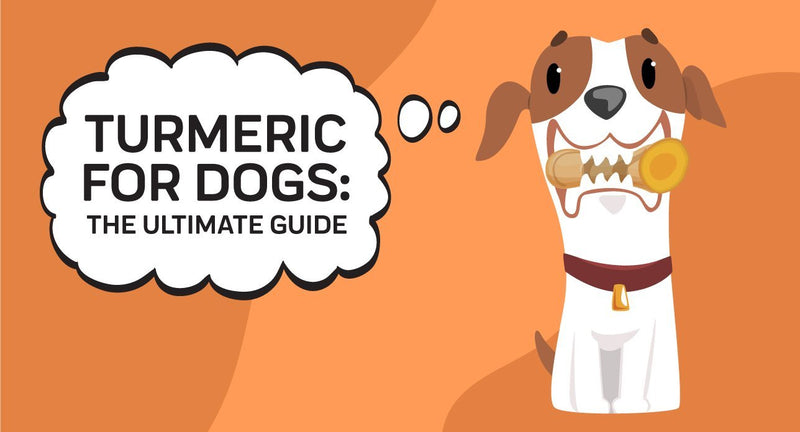Longtime dog owners know that our furry friends can experience the same sorts of health issues that humans do. From headaches to hypertension to nausea and disorientation caused by car sickness, dogs are just as susceptible to all the things we treat with medicine.
But do those same human medications work for dogs?
In general, the answer is no. However, one drug that has been shown to work just as effectively and safely in humans as it does in dogs is Dramamine.
If your dog experiences motion sickness and often gets sick during a car ride or is otherwise susceptible to nausea and vomiting, read through our complete veterinary medicine guide to Dramamine for dogs.
How Does Dramamine Work?
Dramamine is a medicine commonly prescribed to treat nausea by reducing symptoms of motion sickness that's caused by disrupting the vestibular system in your pet's ears. This system is responsible for controlling our sense of balance and can be thrown out of whack when traveling in a vehicle. While many dogs struggle with motion sickens, it's more commonly seen in younger dogs.
Symptoms of vestibular disease include nausea, vomiting, and dizziness. In severe cases, your pet may lose their balance and fall over. If you're planning a road trip with your furry friend, ask your veterinarian if Dramamine is right for them.
Dramamine, also known by its generic name, dimenhydrinate, is an antihistamine and anticholinergic drug. It combines the active ingredient diphenhydramine with 8-chlorotheophylline, a mild stimulant similar to caffeine, to counteract the nauseating effects of an overstimulated vestibular system.
Anticholinergic drugs like Dramamine are often used to treat dogs who suffer from motion sickness. These drugs work as central nervous system depressants, which can help to calm an anxious or excited dog. Similar antihistamines like Benadryl, known for its sedative and anxiety-reducing effects, can also be used to treat nausea.

Often called "travel sickness," motion sickness happens when the vestibular system located in your inner ear is overstimulated. This may lead to symptoms of nausea, vomiting, dizziness, and fatigue.
If you see that your dog has motion sickness symptoms during car rides, Dramamine, when approved by your vet, can be an effective treatment to prevent motion sickness.

Symptoms of Motion Sickness In Dogs:
-
Excessive yawning
-
Drooling
-
Nausea
-
Vomiting or diarrhea
-
Inactivity or lethargy
-
Dry heaving
-
Trembling, uneasiness, or anxiety
-
Rapid breathing
Treating Motion Sickness In Dogs
The negative reactions to car travel dogs may develop aren't always vestibular related. Often, it is anxiety that snowballs into many of the negative effects associated with car sickness.
But even without anxiety, your dogs may develop extremely adverse relationships with the car, which could be a result of a traumatic association with driving or with the vehicle itself. Going to the vet, leaving their previous family/home, or being taken to a shelter can all cause your dog to associate traveling with negativity. Of course, you can use online vet chat for some cases, but you can’t fully eliminate driving with your pet in a car.

While most dogs will likely be fine with Dramamine, some may pet parents want a more natural solution. If your dog's issue with car travel is deeply rooted, or their nausea and vomiting are chronic, talk to your vet. Overcoming these issues with your pet will reduce their reliance on the drug, saving you money and cutting back on the long-term effects of Dramamine for dogs.
Crate Training
One of the most effective methods your veterinarian will likely recommend is crate training. Crate training is the process of getting your dog to feel comfortable and safe in a cage while at home. By doing so, when they take trips, being in their crate will give them a sense of stability and comfort rather than fear.
You can crate train your pet by filling their crate with their favorite toys, pillows, and blankets so it feels like their second home. Giving your pet treats for going in their crate and leaving treats hidden in their blankets or pillows can break negative associations they may have.

Baby Steps
Dogs can take a longer time to adjust to new surroundings than people do. While you may think of your home as your haven from the rest of the world, a lot of times our pets see it as their entire world.
By taking small steps towards riding in a vehicle, as opposed to just loading your dog in the back and hitting the road, you can ease your dog into the experience in a less jarring way.
A good first step is getting your dog used to being in the garage. Spending positive time with your pet in the garage, especially if your vehicle is in there, will help them feel less afraid of the car itself.
From there, you can steadily work your way towards quick trips around the block, then slightly longer drives, and finally to a full-on road trip.
Take Breaks
While you might be fine to make long car trips with only a break or two along the way, your pet likely doesn't have the same kind of stamina. Taking breaks periodically to let them get out of the car, walk around, eat, and use the bathroom will help keep their anxiety at bay.

Stopping every 1-2 hours will give your pet a chance to recover from any motion sickness as well. Remember that even if they aren't making a fuss, they could be in pain or discomfort. They deserve a break just like we do.
Potential Side Effects of Dramamine for Dogs
The most common side effects of Dramamine are lethargy or sedation, upset stomach, dry mouth, and difficulty urinating. These side effects are more often seen with long-term use.
If you notice these side effects within half an hour in your dog and are concerned for their well-being, speak to your veterinarian about reducing the Dramamine dosage or switching to a different drug.
Every pup is different, and each will have a different tolerance to the medication. Even though Dramamine is believed to be a relatively safe drug for dogs, your vet can warn you about the possible side effects.
Other side effects that tend to be more severe could include diarrhea, vomiting, weight loss, and reduced appetite. These are less common and should be taken seriously. Monitor your dog's behavior, and if you notice any of these more severe side effects within half an hour, stop administering them Dramamine, and contact your veterinarian about your dog's health.
Is Dramamine Right For My Dog's Motion Sickness?
For the most part, giving your pup Dramamine shouldn't be a problem. However, there are some circumstances where you should hold back.
If your dog is pregnant or nursing puppies, giving them Dramamine may be dangerous to a pup or two in the litter since the medication may transfer to them. For herding breed dogs, be aware that they will likely be sedated and lethargic during their normal routines and assignments while taking Dramamine.
Also, if your dog has an antihistamine allergy, the medication could be dangerous for them, since it's an antihistamine. Dogs that have health issues like high blood pressure, glaucoma, seizures, intestinal or urinary obstruction, prostate disease, hyperthyroidism, or lung/heart disease should not take Dramamine, as the side effects could be much more substantial.

If your dog has any of the following conditions, Dramamine for dogs is not advisable:
-
COPD
-
High blood pressure
-
Gastric outflow, stomach, bladder neck, or urinary obstruction
-
Allergic reactions from antihistamines
-
Seizures
-
Hyperthyroidism
-
Enlarged prostate
-
When undergoing antigen skin testing
So long as your dog doesn't have any of the listed health issues, they should be safe to take Dramamine. But you should always contact your vet before giving your dog any new medication.
Creating A Regular Dosing Schedule
The best way to determine how much Dramamine to give your dogs is to speak to your vet to calculate the appropriate dosage since they can consider factors like your pet's weight, age, and health before giving your dog Dramamine. Dosing isn't "one size fits all," so consult your vet before giving your dog Dramamine.
If you are giving your pet a standard tablet, 2-4mg per pound of your dog's weight is generally a safe amount. It can be given on an empty stomach, but if nausea is seen, giving it with food is A-OK.
If you're giving it to your dog for travel or motion sickness, wait to administer it until 30 minutes before when you'll be leaving. This way it begins to take effect right as you're hitting the road.
Types of Dramamine
Dramamine comes in a variety of forms, with one of two active ingredients: dimenhydrinate or meclizine. Standard tablets, chewable tablets, and the form for kids contain dimenhydrinate and should generally be fine for dogs to consume with proper dosage.
The "All-Day/Less Drowsy" forms of the medication use meclizine since it has less of a sedative effect, and it should be equally safe.
"Non-Drowsy Naturals" tablet form is not generally safe, however, since it contains a high dosage of ginger. Ginger is safe for dogs in small amounts, but not in the high concentration that this form contains.
Just like people, your dog can overdose on just about any medication.
Overdosing on Dramamine with meclizine will usually result in increased sedation or hyperactivity, but dosages high above the per-pound prescribed amount may cause your dog to hallucinate, have seizures, difficulty breathing, urinary retention, or have an increased heart rate.
Overdoses on dimenhydrinate may lead to seizures, coma, hyperventilation, or death. If you notice any signs of toxicity in your dog, contact a veterinarian immediately.
After giving your dogs Dramamine, always monitor their condition. Make sure that you are aware of the way the drug can interact with other medications, as well as any natural remedies or prescription medication you may be using. Watch for signs of a worsening condition, and if you notice that they are exhibiting signs of an overdose, get help as soon as you can. The faster it is taken care of, the better your dog's chances of recovering.
CBD For Motion Sickness and Anxiety

CBD works by stimulating your ECS system, which is responsible for regulating your dog's mood, sleep, appetite, and more. It can reduce nausea quickly and naturally, as well as manage travel-related anxiety. While Dramamine for dogs can be a great way to treat motion sickness and nausea, some owners may choose not to give it to their pets.
Whether it's due to an antihistamine allergy, or simply wanting to give your pet something natural, it's perfectly reasonable to want an alternative medication for your pet. CBD treats for dogs and CBD oils for dogs are vet-approved, extremely safe for dogs, and are effective ways to help manage nausea and motion sickness symptoms in your pet.
Sources:
CBD Study on NauseaCBD For The Relief Of Nausea
CBD Suppress Acute and Anticipatory Nausea
Immune Responses Regulated by CBD
CBD Regulates Nausea
















